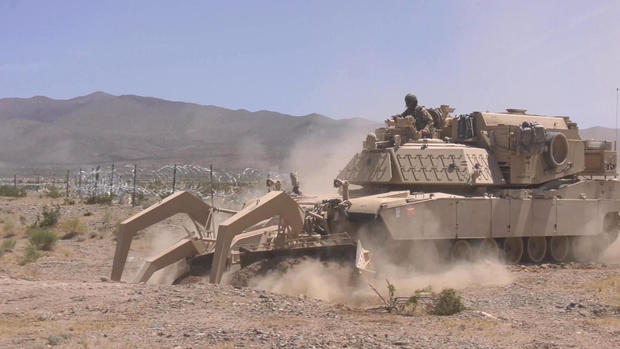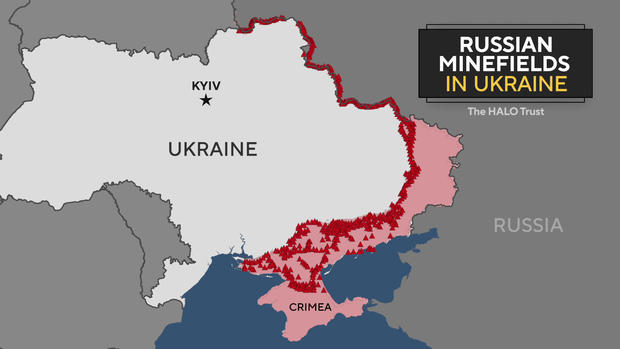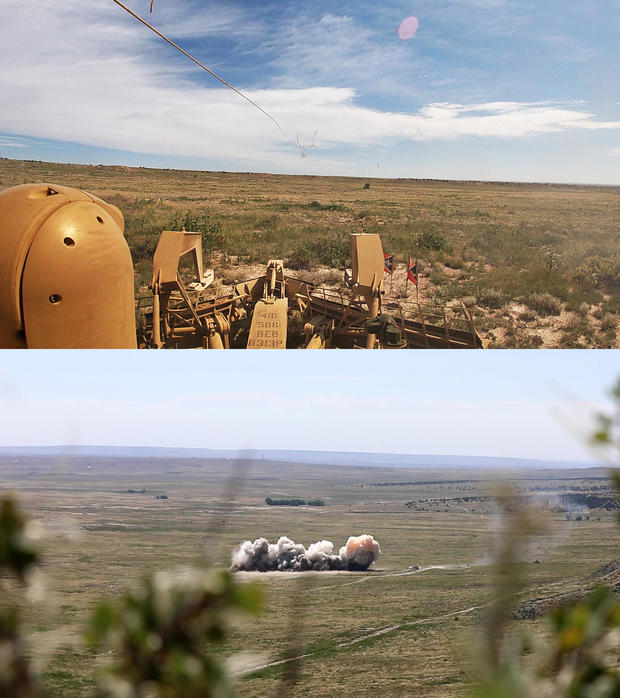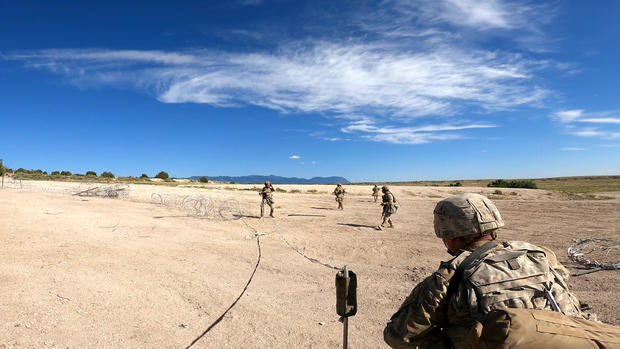How to blast through a Russian minefield
What does it take to blast a path through a minefield? A monster of a vehicle – part tank, part bulldozer – firing a rocket attached to a cord of explosives. That detonation in turns detonates the mines that are in a soldier's path.
At Fort Carson, Colorado, Lt. Col. Latoya Manzey's engineer battalion is training to clear a path wide enough for a column of tanks to pass through and attack enemy lines. "Breach is probably one of the toughest things that we do," she said.
The lane they aim to clear is about the width of an M-1 tank. "That doesn't leave a lot of margin for a tank going through there," said Martin.
"No, it does not," Manzey replied.

The same equipment and tactics these troops are using have been provided to Ukraine to breach the industrial-strength minefields laid by Russia.
Mike Newton, who works with the HALO Trust, said it's "industrial," because the mines have been laid deliberately with a specific outcome in mind. "That outcome is the denial of large amounts of Ukrainian land," he said.
The HALO Trust has already begun clearing minefields the Russians left behind when they retreated from territory they occupied earlier in the war. Newton said parts of Ukraine that were occupied for a significant amount of time allowed Russian military engineers to lay minefields without much interference. "The majority of the minefields that we're seeing consist of hundreds, if not thousands, of anti-vehicle mines," he said.
Spread that out along the entire front in eastern and southern Ukraine, and the numbers are staggering. According to retired Gen. Ben Hodges, former commander of the U.S. Army in Europe, "We're talking about millions of land mines spread across over a thousand kilometers. It's not just like one line of mines sitting on top of the ground. It could be 200, 300, 400 meters deep, and with a high density of mines."

Martin asked, "How important is breaching these minefields to the success or failure of the Ukrainian counter-offensive?"
"It's essential," Hodges replied. "Until you get through that, you never have a chance to really break through Russian defenses and get to your real task, which is of course isolation and destruction of Russian forces."
According to Hodges, getting through any minefield or obstacle belt is extremely dangerous, because you are so exposed.
The training at Fort Carson begins with suppressive fire to make the enemy keep their heads down, and smoke to hide what happens next. The armored breaching vehicle rumbles to the edge of the minefield, protected by two Bradley infantry fighting vehicles. Time is of the essence.
Twenty-five-year-old Sgt. Jasmine Luna commands the vehicle which carries a rocket attached to a 175-yard-long cord, coiled like a snake. The Mine Clearing Line Charge (MICLIC) is packed with explosives – more than 2,000 pounds' worth. Luna fires the rocket, and it carries the cord out over the minefield. After she detonates the cord to set off the mines, she has to drive that plow into the minefield in case she missed any.

"It's supposed to push out the mines, creating a path for us to get through and get the maneuvering force safely through right behind us," she said.
Soldiers rush in behind her to mark the left and right boundaries of the path she has cleared. In this exercise they opened a single lane 100 yards long.

Martin asked, "So, what happens if there's a minefield that's more than 100 yards?"
"You'll shoot again," Luna replied.
On the front lines in Ukraine, rockets and their detonating cords are already arcing over the battlefield, but the path to victory remains blocked by Russian mines.
For more info:
- U.S. Army 4th Engineer Batallion, Fort Carson. Colo.
- The HALO Trust
Story produced by Mary Walsh and Amol Mhatre. Editor: Lauren Barnello.
See also:
- Wagner uprising "most significant threat" Putin has faced ("Sunday Morning")
- The war in Ukraine begins its second year at a standstill ("Sunday Morning")
- Helping a wounded Ukrainian soldier walk again ("Sunday Morning")
- How HIMARS launchers are shifting momentum in Ukraine's fight against Russia ("Sunday Morning")
- In:
- land mine
- Ukraine
- U.S. Army
David Martin is CBS News' National Security Correspondent.
Disclaimer: The copyright of this article belongs to the original author. Reposting this article is solely for the purpose of information dissemination and does not constitute any investment advice. If there is any infringement, please contact us immediately. We will make corrections or deletions as necessary. Thank you.







